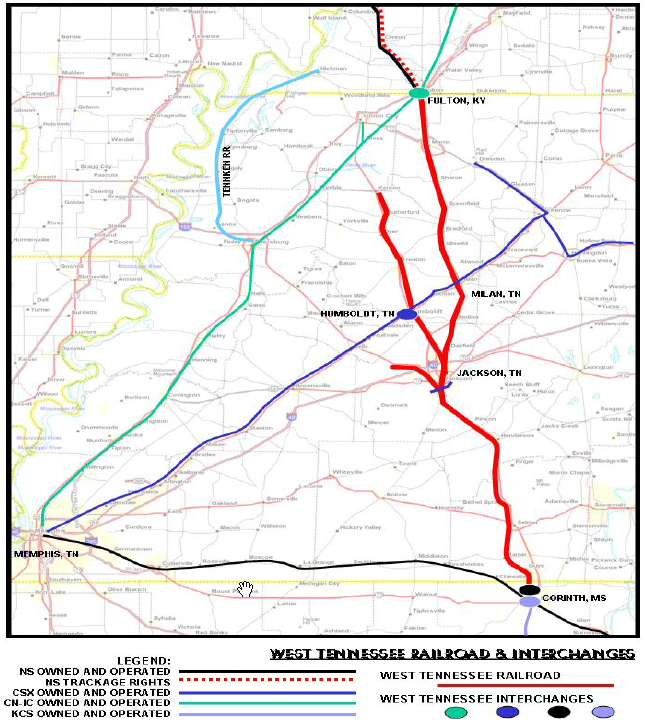Puducah and Louisville Railway (PAL)
 |
Photo by Douglas Weitzman
4/2/16. Paducah & Louisville 1998 at Louisville, Ky..
|
The Paducah and Louisville Railway (reporting mark PAL) is another Illinois Central remnant. It began operations in 1986 as a 223-mile Class II regional (
AmericanRails). According to my 1928 Railroad Atlas, the IC had a line that went generally south of Louisville through West Point to Cecilia. Then it headed generally west along US-62 to Paducah. According to the PAL system map further below, they also have the former IC trackage from Paducah to Kevil and another route through Mayfield to Clayburn and the IC branch from Ceclia to Elizabethtown.
PAL has significantly grown the number of customers served by the railroad since it purchased the track from ICG. I was looking at the type of products handled in their
list of customers
and noticed "Locomotives" for Progress Rail Services in Mayfield and
VMV Paduchbilt in Paducah. That gives me a couple of more industries to research.
 |
Photo by Douglas Weitzman
4/2/16. Dawn. P&I 1803, original colors but very dirty, on a ballast train
in Jeffersonville, In.. |
I was also surprised by how many locomotives
are on the
roster. The roster looks more like a railroad museum than an active railroad. The oldest locomotive I spotted was 1302 (SW13) built in 1940. There were several SDMAC70s built in 1997, which are their newest locomotives. A lot of their locomotives are from the 50s and 60s.
Since 2006, the P&L also operates the
Appalachian & Ohio Railroad in West Virginia on former Baltimore & Ohio trackage. But this is not the reason the P&L roster is so big. The West Virginia operation has retained the A&O name and it has its own
roster. But they use CSXT power to move the coal trains, which is the bulk of their traffic (
Wikipedia).
Please access Cliff's
posting. In addition to a picture of the first IC train across the Barkley Dam, he provides some history of the IC over both dams.
Below is the system map with the "rail connections" layer activated. Later I describe the
FVRR and
WTNN. I could not find Clayburn on the Google Map or my 2014 Rand McNally Road Atlas.
The P&L is doing some serious infrastructure improvements. MMI did not indicate where this steel trestle was being replaced. But IMI indicated it was one of a couple of 100 year old trestles near West Point, KY.
The US Government would have paid for
the new bridge just downstream of the Kentucky Dam as part of a relocation for the construction of a 110x1200-foot lock to remove the delays caused by the current 110x600-foot lock.
Fredonia Valley Railroad (FVRR)
The IC had almost as strong a presence in western Kentucky as did the Louisville & Nashville. In addition to the east/west route that became the PAL, it had a north/south route that ran through Henderson-Blackford-Princeton-Hopkinsville. I still need to research if the IC had a bridge over the Ohio River to connect Henderson with Evansville and its
PD&E route. The FVRR is a
7-mile remnant of this route that runs north of Princeton. It was reactivated in 1998 to connect a quarry to the PAL in Princeton (
kyrailbeds).
The Google Road map shows only about half this distance. But following the track on the satellite image, it is intact to an
aggregate quarry. There were 24 cars being loaded and an engine was parked on a siding at the entrance on the southeast side of the quarry. I wonder if this quarry helped supply the fill for the Kentucky Dam.
West Tennessee Railroad (WTNN)
The WTNN was formed from remnants of the Mobile & Ohio and the Illinois Central. The reason for researching this railroad is that the above P&L System Map showed an interconnection with it south of Mayfield for traffic going to Cornith, MS. Note from the following system map that the northernmost town connected to the TWNN is Fulton, KY. The Paducah-Mayfield branch of the P&L is a remnant of an IC route that went from Paducah to Memphis through Mayfield and Fulton. But a study of the Google maps indicates the P&L stops a couple miles south of Mayfield in some industrial buildings. So I don't know how the interconnection is done given the "hole" in the former IC trackage between Mayfield and Fulton. And TWNN does not claim that they connect with the P&L.
The
roster for the TWNN also has the feeling of a museum. Of note is four ALCO RSD12s built in 1956. There is a nice collection of engine photos on
RailPictures.
1853 is one of the RSD12s.
Update: Kentucky West Tennessee (KWT)



























































